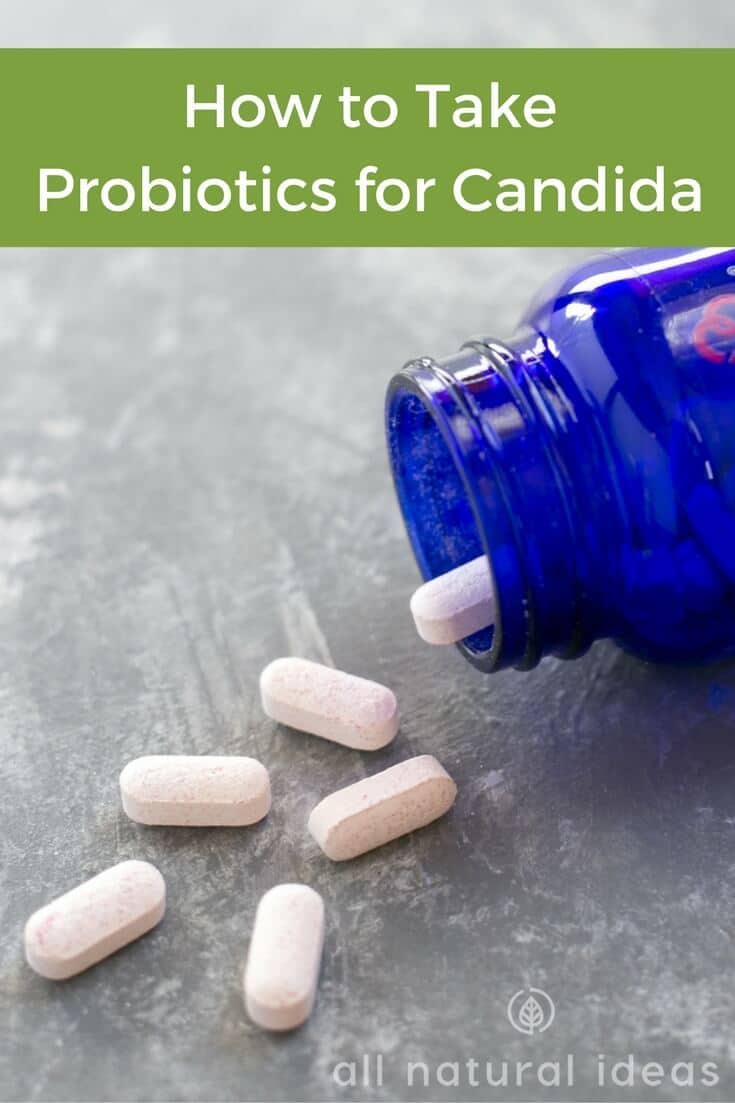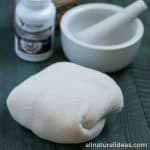Using probiotics for candida may work but you need to know how much and what kind to take. Taking too many can lead to a candida die off, unleashing toxins.

What are the best probiotics to use for candida overgrowth?
Before taking a look at the best probiotics for candida, let’s talk about yeast.
“Yeast” … for some people who try to eat healthy, it’s a dirty word.
And so they avoid food and drink containing yeast. Bread and fermented alcoholic drinks are a couple examples.
But not all yeast is bad. In fact, yeast inside your gut helps with digestion. Yeast contains nutrition like amino acids, the building blocks of protein.
However, health-conscious people are right to be wary about yeast.
That’s because too much yeast is bad. It can lead to a fungal outbreak called candidiasis, aka candida. Fungus is a type of yeast. Candida is a case of too much of a good thing.
Everybody needs a healthy amount of bacteria. Both on your body and inside. However, because of diet and other factors, the good bacteria gets outnumbered by the bad.
Candida albicans is the primary type of yeast in your gut. If too much forms a colony, that’s bad news. Think of it as throwing a party and thousands of people you didn’t invite show up at the door. They eat all your food and behave badly. In essence, this is what an overgrowth of candida looks like.
They steal the food you eat. Before you yourself can absorb the nutrients. Furthermore, candida yeast erode your digestive tract. They eventually penetrate the bloodstream. When candida crash your gut’s party, so to speak, they release toxins. It’s as if they’re smashing all your furniture and wrecking your house.
Leaky gut
What’s the consequence of candida releasing toxins into the bloodstream? Leaky gut. A doctor can diagnose for candida. However, a doctor cannot diagnose leaky gut. There simply is no medical diagnosis for it. However, leaky gut can lead to serious imbalances such as autoimmune disorders.
Leaky gut is when food particles enter the bloodstream. Essentially, this is a double dose of toxicity. The candida yeast produce their own toxins. Additionally, the undigested food particles become toxic to your system.
Consequently, your liver backs up. This is bad news because your liver is the major detox organ of the body.

Signs you need probiotics for candida yeast infection
Admittedly, hitherto, there’s been no mention about probiotics. This is not an intentional gloss over. On the contrary, the reason for the dearth of info? Many people rely on quick, fast solutions for their health problems.
While there’s nothing wrong with wanting a fast fix, it’s important to understand the root causes. This way, you’ll prevent candida overgrowth yeast infections in the future.
Before discussing why probiotics work, though, there’s more background info to address. Namely, how you know you need probiotics in the first place.
Here are some signs:
- Constant fatigue
- Bloating, belly distention
- Skin breakouts
- Cravings for carbs and sugary snacks
- Foggy brain/difficulty concentrating
- Frequent itching
- Vaginal yeast infections and UTIs
- Moodiness
You need probiotics if you don’t absorb nutrients. And when your liver is bombarded with toxic overload, it’s easy to see how some of these conditions above can arise.
Thankfully, probiotics can help.
Probiotics for candida yeast infection
Finally, we’re getting somewhere, right? We’re finally going to talk about probiotics? Not quite. Again, many people crave a magic pill for their problems. Whether it’s weight loss, mood enhancement, energy….
Without doubt, probiotics for candida are a magic pill. But without understanding what gives rise to candida yeast overgrowth in the first place is a mistake. Don’t know what’s causing your candida? Then you’re doomed to get repeat outbreaks and symptoms.
And the number one thing that produces candida overgrowth is sugar. Yeast feeds on sugar. The Standard American Diet (SAD; an appropriate acronym) includes nearly 20 grams of sugar per day (source)!
Twenty grams of sugar per day equals 800 calories from sugar alone. Furthermore, that doesn’t include carbohydrates that quickly convert into sugar. A piece of bread, even whole wheat, is an example of a quick-burning carb.
Without further ado, here’s the reason to take probiotics for candida….
Probiotics, which are microscopic good bacteria, help break down sugar.
In addition, probiotics introduce good bacteria into the gut. The more good bacteria the healthier your immune system will be. That’s because most of your immune system cells reside in your gut.
Probiotics also communicate with your cells to carry out several important functions. Regulating hormones is but just one example. However, if you have candida, your bacteria can’t communicate effectively with your cells.
And when cellular communication breakdown occurs, your blood sugar levels can fluctuate. Moreover, a domino effect leading to more imbalances occurs.
To prevent this domino effect, take the best probiotic supplement for candida. The best one will have at least a handful of strains. Two examples of candida-killing strains are Lactobacillus and Bifidobacterium.

How long to take probiotics for candida
Before you take probiotics, there’s another dietary tip you should be aware of. In addition to ditching foods with sugar, or foods that convert into sugar, also avoid fermented foods. They may be trendy and have a good reputation for being healthy. That’s because of their probiotic content. But fermented foods also feed bad bacteria.
Now then, how long should you take probiotics for candida? It depends. Have a history of lots of antibiotics usage? It could take much longer to colonize your gut with enough probiotics.
In general, though, take a probiotic supplement with at least 10 billion colony forming units (CFU) every day. You should notice improvements within a couple weeks. Notice that you have bloating or other digestive upset after you start taking probiotics? Then you might want to take a supplement with lower CFU count.
If you don’t notice any adverse reactions, add another 10-billion count pill.
Soil-based probiotics have a reputation of being more beneficial. The reason why is they survive the journey past your acidic stomach into your intestine. However, soil probiotics can be more expensive and harder to come by.
It can take up to a couple months to kill off the excess candida yeast.
Remember to take your probiotics every single day. Consider your gut health as important as dental hygiene. In other words, you should brush and floss every day. And take your probiotics.
Probiotics candida die off
When you take an antibiotic it’s like a nuclear bomb in your gut. Both good and bad bacteria die. The same is true when you take high doses of probiotics at once. The yeast dies. And remember that candida contains toxins. When a huge amount of yeast dies toxins start swimming in your bloodstream.
This condition is known as probiotics candida die off. How do you know if you have candida die off? If you’re already existing symptoms become worse. For example, feel sluggish before taking probiotics on a regular basis? You won’t be able to get out of bed in the case of a candida die off.
To prevent the die off, start with one probiotic pill per day. Again, start with a safe count of 10 billion. Everyone is different. So this advice is like throwing darts at a dartboard blind. Feel worse than before? Then scale down to 1 billion.
In general, those who experience bad die off symptoms drastically overdo probiotics. Believing more is better, they down a half bottle at once.
You can also take liver supporting supplements like milk thistle to prevent die off symptoms and aid detoxification.
In addition, yogurt is regarded as a great source of probiotics. But yogurt typically doesn’t solve the candida problem. Yogurt contains too much sugar. Even plain grass-fed yogurt won’t kill candida. That’s because the probiotics might not survive the journey into your digestive tract.
Moreover, the probiotic count in yogurt is usually too low. At least too low to have a positive impact on candida.
Finally, here are some candida solutions you might not be aware of: coconut essential oil, apricot oil, and saccharomyces boulardii.






